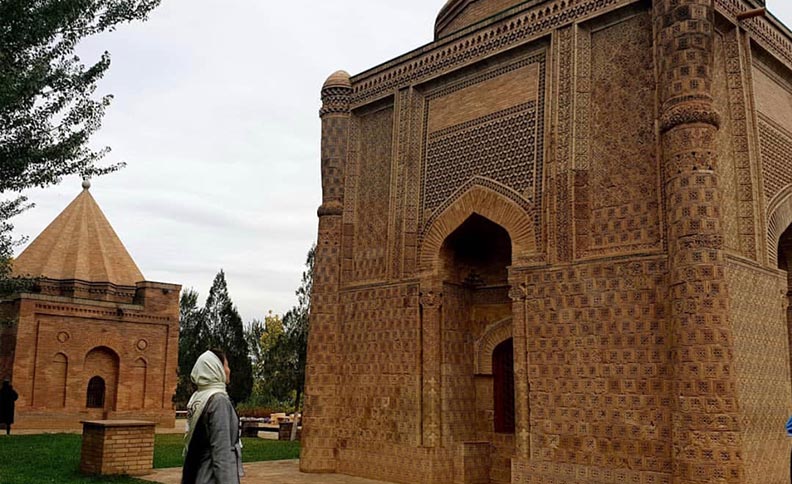Turkestan was founded around 500 AD at the intersection of caravan routes from Samarkand, Bukhara and Khiva to Northern Kazakhstan. The city was known as the spiritual and political center of the Turkic-speaking people in the XVI-XVIII centuries and was the capital of the Kazakh Khanate. The city of Turkestan gained worldwide fame thanks to the preaching activities of the famous Sufi sheikh and philosopher Khoja Ahmed Yasawi, who was buried here in a small mausoleum in 1166. The existing mausoleum was erected 233 years after his death by order of the outstanding commander, Emir Tamerlane and today is a masterpiece of medieval architecture, which has become one of the main places of worship of Muslims. According to legend, all attempts to erect the walls of the mausoleum failed: according to one version, they were demolished by a strong storm, according to another version – a green bull appeared, which destroyed everything. Grave grave of Saint Arystan Baba (teacher and spiritual mentor of Khoja Ahmed Yasawi), and then over the grave of Khoja Ahmed Yasawi, which Tamerlane did, the saint who appeared to Tamerlane in a dream said that first he needed to build a mausoleum over the grave of Saint Arystan Baba (teacher and spiritual mentor of Khoja Ahmed Yasawi). Therefore, pilgrims first visit the mausoleum of Arystan-Bab, and then the mausoleum of Khoja Ahmed Yasawi. Pilgrims say that three trips to Turkestan are equal to a small hajj to Mecca.
Turkestan region is located among the arid steppes of the extreme south of Kazakhstan. The administrative center of the region – Turkestan – is a city with a 1500-year history and one of the most important pilgrimage centers for Muslims.
History
In ancient times, Turkestan (then named Yassy) It stood at the intersection of caravan routes leading from Bukhara, Samarkand and Khiva to the north. In the XII century, an Islamic preacher and philosopher Khoja Ahmed Yasawi lived in Turkestan, who is considered the national saint of all Turkic peoples. The memory of Yassawi was perpetuated by the great Tamerlane, who built a magnificent mausoleum, which is now the main attraction of the Turkestan region. By the XVI century, Turkestan received its current name and became the capital of the powerful Kazakh Khanate. At the beginning of the XXI century, Turkestan was more like a provincial one-story town. However, after 2018, the city began to transform.
Why is the Turkestan region worth visiting?
In recent years, the center of Turkestan has turned into a huge tourist complex with museums, hotels, theaters, shops and, of course, historical attractions. Despite the arid climate, there is a lot of greenery in the city. There is even a water channel, which the locals called “Kazakhstan Venice”. Today’s Turkestan is a beautiful, modern city and a future metropolis.
Tourists should not be limited only to Turkestan during their trip. You should definitely travel around the area, which is fraught with many interesting places. Here you can see the ruins of other major cities of antiquity, such as Otrar and Sauran. The mysterious cave of Akmeshit and numerous mausoleums, of which there are many in the region, are also popular among pilgrims. Nature lovers should visit the Aksu-Jabagly Nature Reserve and the Sairam-Ugam National Park. Health tourism is also actively developing in the Turkestan region. The main part of the sanatoriums is located in the Saryagash district, which is famous for its thermal and mineral springs.
Visit the grand locations that Kazakhstan have to offer!
Contact us @ Russ InfoCenter To Book 5-Day/ 4-Nights tour and many more tour packages from India to Kazakhstan
Fill the form below and we’ll get back to you right away!









